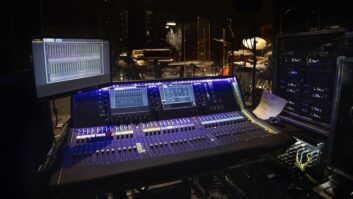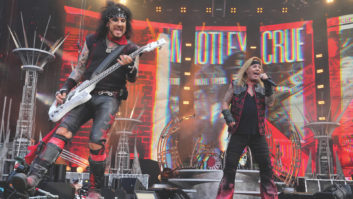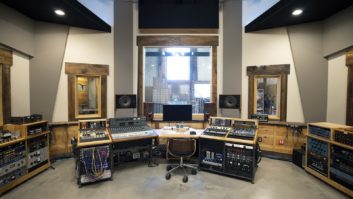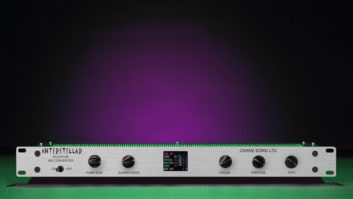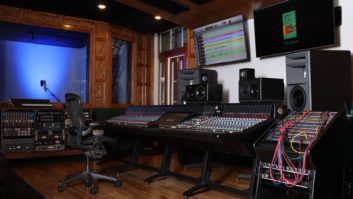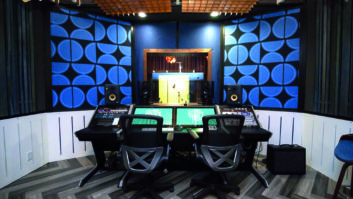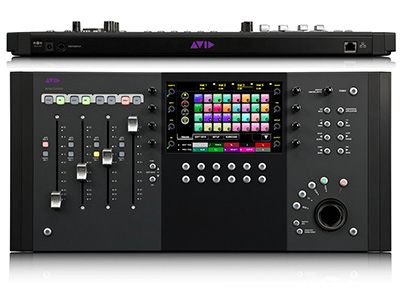
The true innovations behind modern audio mixing work surfaces are driven by thoughtful development for specific applications. A different beast than the traditional console stocked with preamplifiers and a variety of analog components for inboard processes, the modern work surface generally doesn’t process anything; it simply allows more detailed manipulation of digital audio content by the fingertips. While the touchscreen revolution has certainly pushed both traditional console manufacturers as well as DAW developers to provide more tools to better “reach inside” a user’s chosen workstation, touchscreens are not work surfaces, at least for the purpose of this article.
Here, I touch on options for those users wanting not only multi-touch GUIs but those great workflow institutions such as moving faders, knobs, buttons, meters of all types, and so on. Where a mouse and a keyboard are stalwart tools for DAW users, these proprietary products listed below are examples of the latest touch-based paintbrushes for modern audio engineers, content creators and musicians alike.

Avid S3
Perhaps, for example, you are a Pro Tools–centric composer working on a variety of pieces and spots, leaning toward larger pieces but living on smaller projects and spots. The quality and speed of your work depends on breaking away from too many keystrokes or pages; you seek to find a device to help you complete projects as quickly as they are inspired, yet are restricted by budget.
At $1,499 street, such Pro Tools users have arguably never had such tactile control over their DAW than with Avid’s Artist Control, featuring motorized faders, a decent-sized customizable touchscreen GUI, and programmable buttons and rotary knobs including a dozen smart keys. Connected via Ethernet and operating under Avid’s EuCon control protocol, Artist Control is compact for small, project studio-sized setups, yet large and comprehensive enough in its control to truly save significant time. Fitting with its name, it has a musical instrument-like flow to its layout, allowing it to quickly become natural for PT-centric end users.

Mackie AXIS system
For those working in Pro Tools with more channels and doing more “traditional” recording and mixing on not one but multiple DAW platforms, Avid’s S3 ($4,999) delivers a classic console feel and flow based around AVB Ethernet control protocol with the bonus of a 4×6 AVB interface for digital audio I/O. Larger still, Avid’s S6 control surface offers a wide range of modular components to populate a large-format style mixing surface, notably including the M10 Master Touch Module featuring a 12.1-inch multitouch GUI surrounded by eight programmable rotary encoders plus Master Automation, Display, Knob, Fader and Process Modules. As such, prices are varied depending on the S6’s makeup, yet still quite affordable compared to S6’s System 5 and ICON ancestors.
For commercial mix settings at the top end of audio production leaning toward Steinberg’s Nuendo DAW for its proven capabilities in audio post-production, audio-for-video work, audio-for-games and the like, Yamaha’s Nuage control surface is purpose-built for use with Nuendo, allowing tactile control of Nuendo’s uniquely nuanced features. Like Avid’s S6, Nuage is also modular, allowing the user to build out its workflow with Fader and Master units. Up to three DAWs can be switched and controlled via a Nuage Fader unit, allowing dialog, sound effects and other various elements needed in post-production to converge for mixing within the Nuage ecosystem. Nuage uses no dedicated DSP cards, allowing user choice in CPU, and is interconnected via Dante network protocol.

PreSonus StudioLive Mix System
I recently spoke with Kyle Snyder, Lecturer and Outreach Coordinator at Ohio University’s Scripps College of Communication, School of Media Arts & Studies about his school’s post-production and critical listening facility and, specifically, its centerpiece, a Nuage work surface for its a 5.1 surround monitoring setup. Teaching Nuendo as a preferred DAW along with Pro Tools and Adobe Audition, Ohio U’s program carefully researched all workstation and work surface options for the new facility, choosing Nuendo and Nuage. “There is absolutely no better software for creating audio for virtual reality than Nuendo,” Synder told me. “I know that Oculus [VR development company] has adopted Nuendo and the Nuage mixing system as what they use internally, and since our studio has a game research lab including the Immersive Media Initiative with Nuendo and Nuage installed, too, it supported that choice.”
Recording Meets Live
PreSonus has arguably set the DAW world afire with its burgeoning software, Studio One, now in its third version. Studio One has clearly thrived by its simultaneous development alongside PreSonus’ hybrid analog/digital console and work surface series StudioLive, a line featuring both tactile, partially analog mixers and rack-mount mixers with touchscreen control. And, of course, StudioLive is controllable via an untethered tablet, too.

QSC TouchMix-16
In an industry where recording production profitability has plummeted and sound reinforcement opportunities have multiplied, Studio One is embraced, as it was a very affordable by-product of amalgamating recording and live sound production processes, borne from PreSonus’ Capture—a multitrack recording and soundcheck program for StudioLive mixers largely taking the place of freestanding multitrack hard disk recorders. As such, PreSonus now provides a complete audio production ecosystem for multi-market serving audio professionals.
Meanwhile, Mackie’s DL Series took the proliferation of tablet-based consumer products in the marketplace and built hardware that could take full advantage of its popular ergonomics, fleshing out the concept in a range of touch-based, networkable live mixing and multitracking tools. Starting small and going big, Mackie now touts its flagship AXIS system featuring a DL32R 32-channel Rackmount Digital Mixer (also controllable via tablet, iOS or Android) and the new DC16 Digital Control Surface. Offering tactile control over one of the user-friendliest software mixing systems I’ve seen, the DC16 closes the circle on easy “anywhere” mixing while offering the faders and buttons we may want at a more traditional front-of-house position.

Slate Raven MTi2 Multi-Touch Production Console
A unique live mixer from QSC Audio that is also tablet-centric, TouchMix-16 features 16 input channels, up to 10 aux sends, four effects channels and some basic recording capabilities. As such, it’s an ideal tool for the club-touring, low-input-count audio engineer with a need to multitrack record performances, too. With the help of audio engineer and pro audio industry veteran Morten Støve, I organized a review of the TouchMix-16 last year; we discovered that its clever, traditional console-like design featuring premium built-in preamps are a great combination for small-scale live mixing and audio capture jobs.
Tablet/Touchscreen Mixing
For better or for worse, consumer technology habits have guided our most popular present-day audio sculpting mechanisms. Look no further than our many tablet-inspired tools—some described above—that are now integral parts of an audio professionals toolbox, used daily.

Soundcraft Ui16 Remote-Controlled Digital Mixer
Across the board (pun intended), the touchscreen-controlled CPU is pushing it all forward. In its ubiquitous nature, the smartphone and fleshier cousin tablet have enabled us to control mixes via Bluetooth from the crowd. Are options limited? Sure, but perhaps we don’t want mixers having that many options, assuming they’re volunteers, newbies and general tinkerers—think community theaters, churches/houses-of-worship, and school/institutional productions.
The fact is, today I can easily send someone, for example, a few sculpted channels of audio via Mackie’s DX Series of Bluetooth-controlled live mixers ($199 and $299) at house-of-worship settings and not overwhelm a soul—rather, I give them the parameters they need and adjustments are made live, easily, via a happy-to-help volunteer. After all, they already had the mixer—the phone in their pocket or tablet from home—they download the app, and there they are.

Yamaha Nuage control surface
Soundcraft’s Ui Series, available in 12- and 16-input varieties, take live tablet control a step further, basically eliminating the need for any particular OS or particular app, simply controllable via its built-in Wi-Fi. This mixing product is, indeed, the “anti-console,” or the “BYO-CPU” for a low-cost solution in a variety of low-channel count, live sound reinforcement applications.
Finally, I would be remiss if I didn’t mention Slate Digital’s groundbreaking Raven line of touchscreen DAW controllers, which only now seem to not be sitting on the bleeding edge of pro audio technology. Officially unveiled years ago, the idea of a huge iPad-like touchscreen to essentially turn processor knobs in Pro Tools made a big splash on the pro audio marketplace, and as such, arguably ignited ideas for a wide range of next-generation control surfaces throughout our industry for live, recording and all applications in between. Now, years later, the idea is still cool and evolving; upstarts such as Neyrinck and their V-Control Pro 2 software—an iOS-, Android-, OS X- or Windows OS-friendly system—allow remote, multi-unit DAW control via a universal-looking UI. And the beat goes on.
Strother Bullins is Technology Editor for NewBay Media’s AV/Pro Audio Group.
